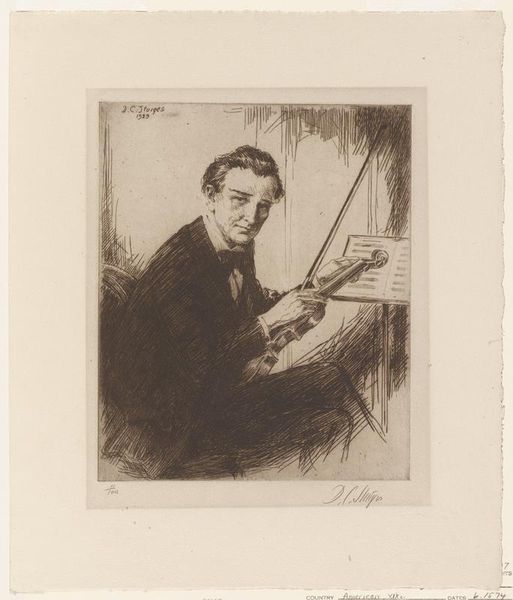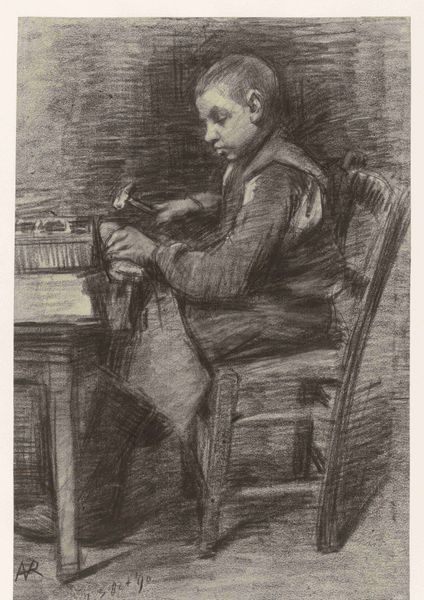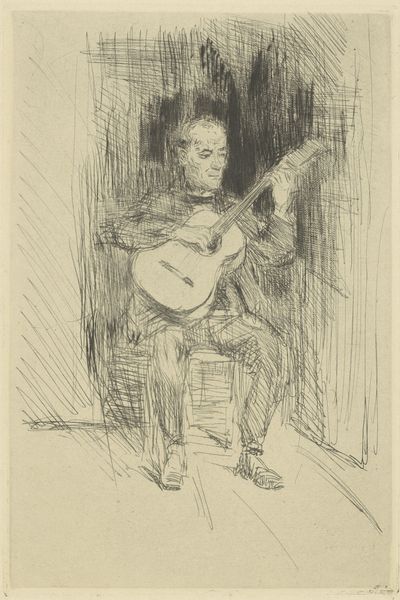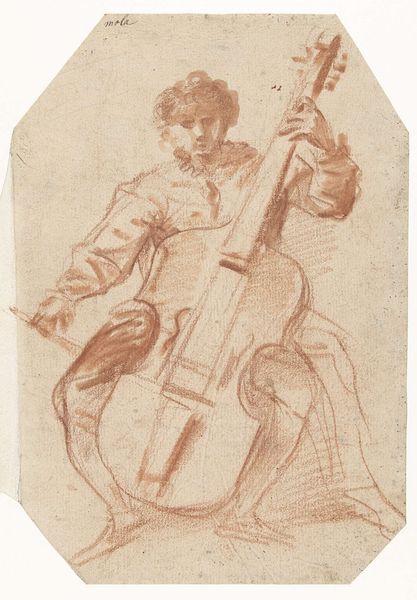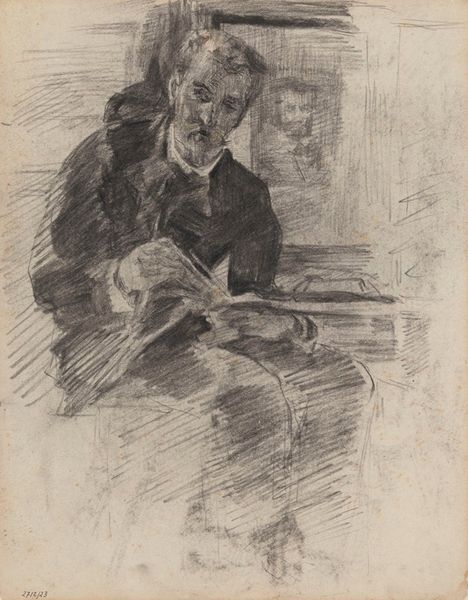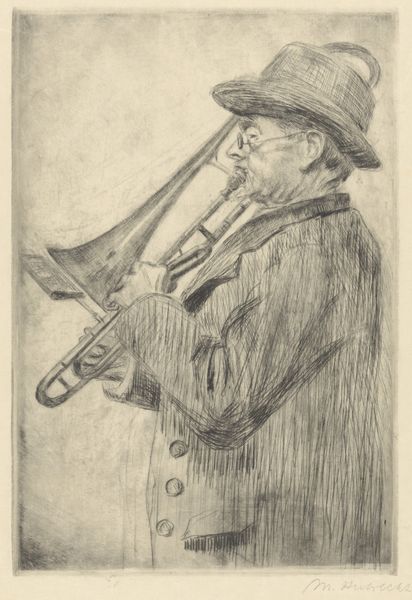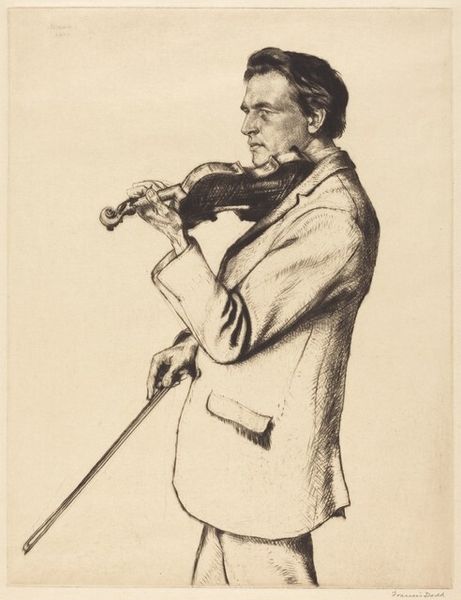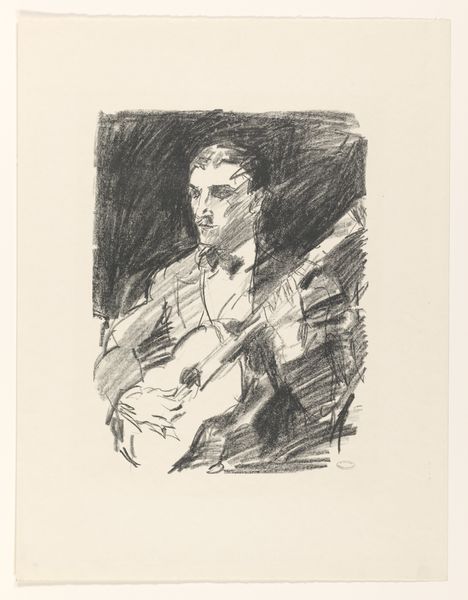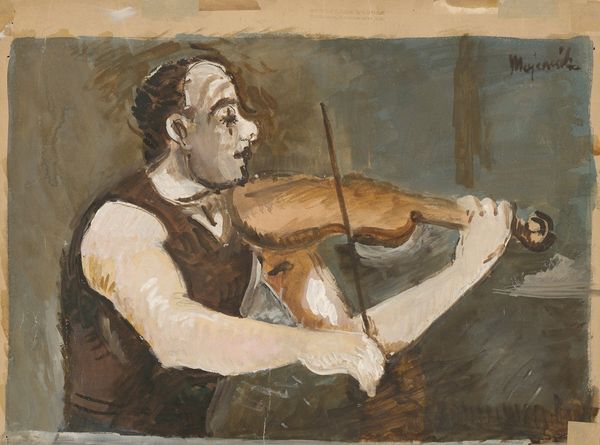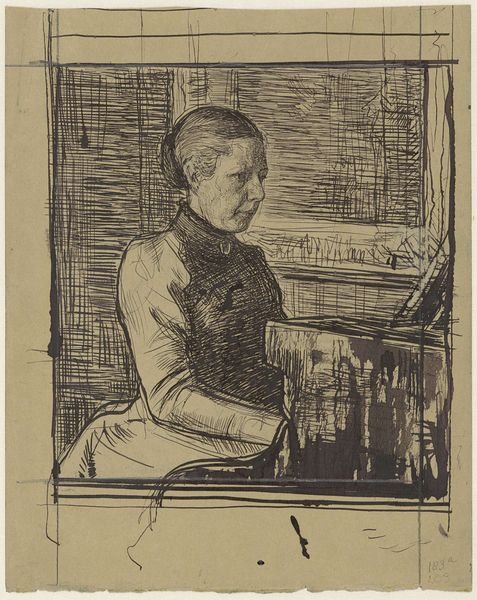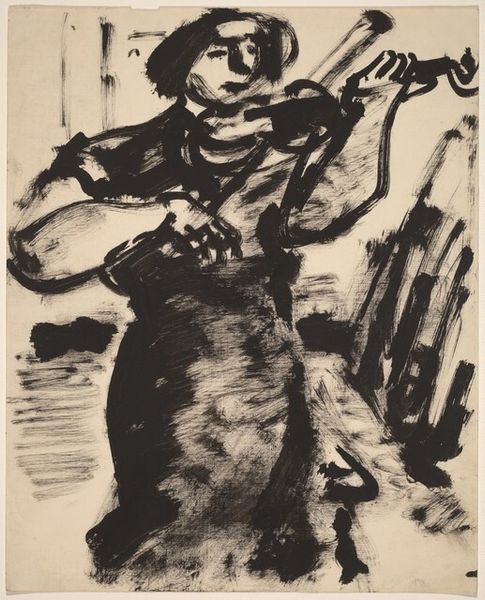
drawing, pencil
#
drawing
#
toned paper
#
light pencil work
#
pen sketch
#
pencil sketch
#
personal sketchbook
#
ink drawing experimentation
#
pen-ink sketch
#
pencil
#
sketchbook drawing
#
genre-painting
#
storyboard and sketchbook work
#
sketchbook art
#
realism
Dimensions: height 393 mm, width 283 mm
Copyright: Rijks Museum: Open Domain
Curator: Just look at this lovely pencil drawing. It is titled “George Bacot die een cello bespeelt”, or “George Bacot playing the cello”, and was created by Jo Koster around 1915. Editor: It gives off such a quiet and serious mood. The hatching and shading make it almost somber, a real study in concentration. Curator: Absolutely. You know, the choice of rendering George Bacot—presumably a known musician in the Dutch arts scene at that time—really speaks to the evolving status of music in the early 20th century. It's almost enshrining an ordinary act. Editor: It is, and observe how the drawing style emphasizes form. You can feel the weight of the cello, see the strain on his posture, everything coming together around this cultural moment of musical performance and visual documentation. Curator: There’s that cultural echo. Now, it seems to me the artwork also provides a window into Jo Koster's technique as an artist. It shows their ability to quickly and efficiently convey the mood and emotion through simple lines and minimal detail. Note that expressive potential! Editor: The rough and ready look of the piece might also indicate its role as a study, perhaps even practice to sharpen abilities that can later inform formal artwork or pieces on a more impressive scale. Curator: Perhaps intended for a close circle or personal collection then, versus the salon culture? These types of works humanize those cultural producers to me. Editor: Very much so! I suppose these pieces offer such unique views to historical worlds. Each look back offers something new about the person or artist that they depict. Curator: Indeed. We began to look back ourselves through these conversations. Editor: Exactly, and those echoes help ensure history does not die.
Comments
No comments
Be the first to comment and join the conversation on the ultimate creative platform.
